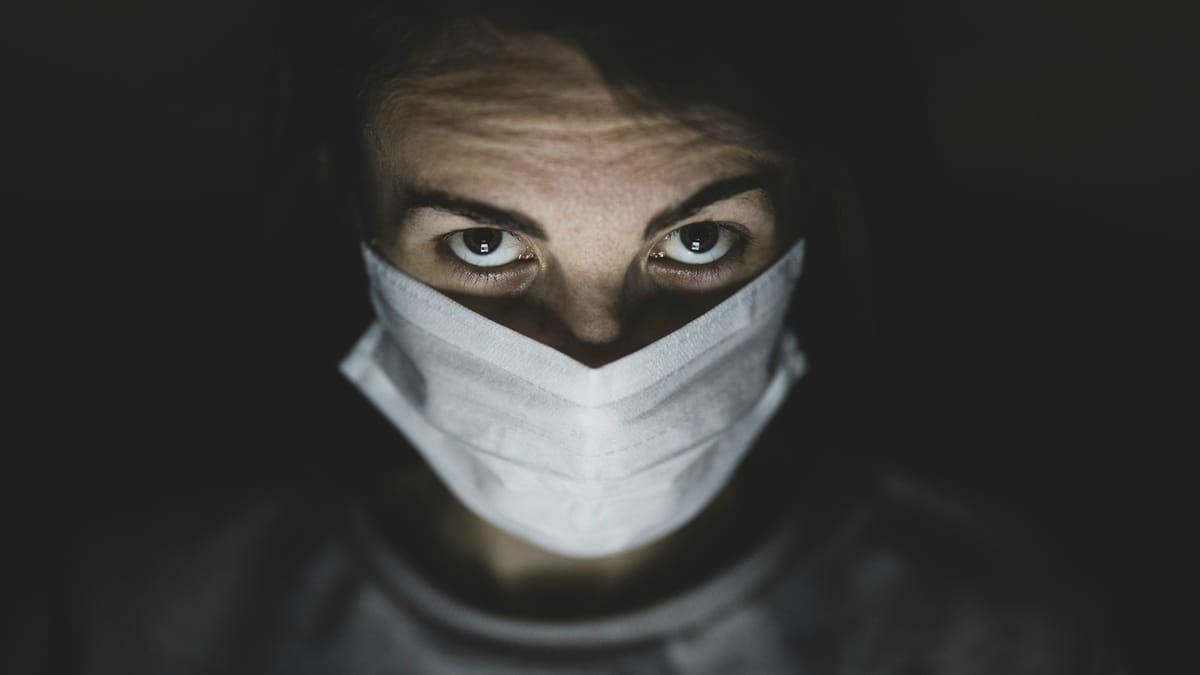Beyond the Mpox Outbreak
Uncovering the Hidden Patterns that Will Shape the Future of Mpox

Mpox, formerly known as monkeypox, was first identified in 1958 among laboratory monkeys, with the first human case recorded in 1970. Initially confined to remote regions of Central and West Africa, the virus was largely overshadowed by other global health concerns. However, in recent years, mpox has made a startling comeback, culminating in a global outbreak that began in 2022. This resurgence saw cases spread across multiple continents, affecting thousands of individuals and challenging public health systems worldwide. Given its reemergence and potential for further spread, understanding mpox has become crucial for healthcare professionals and researchers. A comprehensive grasp of its epidemiology, transmission patterns, and potential treatment options is essential to curbing its impact and preventing future outbreaks.
Etiology, Transmission, and Diagnosis of Mpox: Untangling the Complexities
Understanding the etiology and transmission of mpox is crucial for effective prevention and management. The mpox virus belongs to the genus *Orthopoxvirus*, closely related to the variola virus responsible for smallpox. While both viruses share genetic similarities, mpox is less virulent and has a lower mortality rate. The natural reservoirs of the mpox virus are thought to include certain rodent species, with animal-to-human transmission occurring primarily through direct contact with infected animals, such as through bites, scratches, or consumption of undercooked meat.
Human-to-human transmission is more complex, involving several pathways. Direct contact with infectious lesions, bodily fluids, or contaminated materials is a primary mode. Indirect contact, such as touching surfaces or clothing contaminated with the virus, also poses a risk. Additionally, respiratory droplets can spread the virus during prolonged face-to-face contact. Recent studies have indicated the possibility of sexual transmission, particularly in outbreaks where close physical contact is involved. The incubation period for mpox typically ranges from 6 to 13 days, though it can extend to 21 days. The clinical presentation varies, beginning with non-specific symptoms like fever, headache, muscle aches, and swollen lymph nodes, followed by a distinctive rash that progresses through various stages—from macules to papules, vesicles, and eventually pustules. The disease generally lasts 2 to 4 weeks, and while most cases are self-limiting, severe complications can occur.
Accurate diagnosis is vital for effective management. Clinicians should be aware of the clinical signs and symptoms of mpox, distinguishing between early and late-stage manifestations. Laboratory testing is essential for confirmation, with Polymerase Chain Reaction (PCR) being the gold standard for detecting the virus in clinical samples. Serology and viral culture can also be used, though they are less commonly employed.
Differentiating mpox from other illnesses with similar presentations, such as varicella-zoster (chickenpox), smallpox, or herpes zoster (shingles), is critical. Misdiagnosis can lead to inappropriate treatment and further spread of the virus. Therefore, a thorough understanding of the etiology, transmission, and diagnostic processes is indispensable for healthcare providers dealing with mpox.
Management and Treatment of Mpox: Comprehensive Approaches for Effective Control
Managing mpox requires a multi-faceted approach that combines symptomatic care, antiviral therapies, vaccination, and public health interventions. Supportive care is the cornerstone of mpox management, focusing on alleviating symptoms and preventing complications. Patients with mild cases typically receive treatment for fever, pain, and hydration, while severe cases may require hospitalisation for more intensive monitoring and intervention. Infection control measures, including isolation of infected individuals, proper hand hygiene, and the use of personal protective equipment (PPE) by healthcare workers, are critical in preventing the spread of the virus.
Antiviral therapies offer an additional layer of treatment, though their use is often reserved for severe cases or patients at high risk of complications. Cidofovir and its derivative, brincidofovir, have shown efficacy against the mpox virus in vitro and in animal studies, though their use in humans is limited and often accompanied by significant side effects. Tecovirimat, a more recently developed antiviral, has garnered attention for its ability to inhibit viral replication and has been approved for use under specific conditions. Clinical trials are ongoing to assess its full efficacy and safety in treating mpox.
Vaccination strategies play a crucial role in both the prevention and management of mpox outbreaks. The smallpox vaccine, also known as the Jennerian vaccine, has been found to provide cross-protection against mpox due to the close genetic relationship between the two viruses. In recent outbreaks, the vaccine has been used as a preventive measure for those at high risk of exposure, such as healthcare workers and close contacts of confirmed cases. Additionally, efforts are underway to develop vaccines specifically targeting mpox, which may offer improved efficacy and safety profiles.
Public health interventions are equally important in controlling the spread of mpox. Contact tracing is essential to identify and monitor individuals who may have been exposed to the virus, allowing for timely quarantine and reducing the risk of further transmission. Quarantine measures, though challenging to implement, are necessary to contain outbreaks, particularly in densely populated areas. Public awareness campaigns also play a vital role in educating communities about the risks of mpox, the importance of vaccination, and the need for early detection and treatment. These campaigns help to reduce stigma and encourage individuals to seek medical attention promptly.
Challenges and Controversies in Mpox Management: Addressing Global Inequities and Public Perception
The management of mpox has revealed significant challenges and controversies, particularly in global preparedness, access to resources, and the impact of stigma and misinformation. The recent outbreak has underscored the gaps in global health systems and the need for a coordinated response. While the world has dealt with viral outbreaks before, the speed and scale of poxs spread have highlighted the limitations in our current preparedness. Key lessons learned include the importance of early detection, rapid deployment of resources, and robust communication between international health organisations and national governments. However, many countries were unprepared, leading to delayed responses that exacerbated the outbreak’s impact.
A critical challenge in managing mpox is the equitable access to diagnostic tests, treatments, and vaccines. While some nations have the infrastructure to quickly deploy these resources, others, particularly in low- and middle-income countries, struggle with availability and distribution. The disparity in access has raised concerns about global equity, as vulnerable populations in resource-limited settings are often the last to receive life-saving interventions. Furthermore, the cost of antiviral treatments and vaccines can be prohibitive, limiting their use in areas where they are most needed. This inequity not only hampers efforts to control the virus but also perpetuates health disparities on a global scale.
Stigma and misinformation surrounding mpox present additional challenges, particularly in affecting the public's perception and response to the virus. In many regions, mpox has been incorrectly associated with specific communities, leading to discrimination and social ostracization. This stigma deters individuals from seeking medical care, getting vaccinated, or following public health guidelines, thereby increasing the risk of further transmission. Moreover, misinformation spread through social media and other platforms has contributed to confusion and fear, complicating public health efforts. Addressing these issues requires a concerted effort to educate the public, combat false narratives, and promote an inclusive approach to care.
Advancing the Fight Against Mpox
As the global community continues to grapple with mpox, ongoing research and future strategies are critical to improving our understanding and control of the virus. Clinical trials and studies are at the forefront of these efforts, focusing on the development of effective therapies, vaccines, and diagnostic tools. Researchers are exploring a range of antiviral treatments, including novel compounds and existing drugs like tecovirimat, to enhance therapeutic options for mpox patients. Simultaneously, vaccine development is a priority, with efforts to create more effective and safer vaccines specifically targeting mpox. These studies aim not only to improve outcomes for those infected but also to provide better prophylactic measures to prevent future outbreaks.
Surveillance and monitoring are equally crucial in the fight against mpox. Enhancing global capacity for early detection and response is necessary to prevent the virus from spreading unchecked. This involves strengthening laboratory networks, improving reporting systems, and fostering international collaboration to share data and resources. By improving surveillance, health authorities can identify and respond to outbreaks more quickly, reducing the virus's impact on affected communities. Moreover, integrating mpox surveillance with existing systems for other infectious diseases can help create a more comprehensive approach to public health monitoring.
Interdisciplinary collaboration is essential to effectively control mpox. Healthcare professionals, researchers, and policymakers must work together to ensure a coordinated response to the virus. Healthcare workers are on the front lines, providing care and implementing infection control measures, while researchers develop the tools and knowledge needed to combat the virus. Policymakers play a crucial role in creating the frameworks and funding necessary to support these efforts, ensuring that resources are allocated where they are most needed.
Looking ahead, the global community must continue to invest in research, enhance surveillance, and foster collaboration to stay ahead of mpox. By focusing on these areas, we can build a stronger foundation for future efforts to control the virus, reduce its impact, and ultimately prevent its spread. As we learn more about mpox and its behaviour, these combined efforts will be key to mitigating the threat it poses and protecting public health on a global scale.
Sebastian’s Battle with Mpox
Sebastian, a 39-year-old from New York, shared his harrowing experience with mpox in a July 2022 article by The Guardian. He vividly described his ordeal: “I literally screamed out loud in pain,” reflecting the severe discomfort caused by the extensive rash and high fever. The pain was so intense that it left him immobilised and suffering. During his two-week illness, Sebastian faced isolation and stigma, feeling cut off from social support and struggling with the public's misconceptions about mpox. “The isolation was mentally exhausting,” he noted, highlighting the emotional toll of being separated from friends and family. Despite receiving medical care, Sebastian’s experience underscores the need for greater public awareness and empathy towards those battling mpox. His story illustrates the profound physical and emotional impacts of the disease and the importance of compassionate understanding.
Key Takeaways
- Mpox Resurgence: Mpox, formerly monkeypox, resurfaced globally in 2022, spreading across continents and challenging public health systems with its rapid transmission.
- Virus and Transmission: Mpox, related to smallpox, spreads through direct contact, respiratory droplets, and possibly sexual transmission, with an incubation period of 6-21 days.
- Diagnosis and Differentiation: Accurate diagnosis of mpox relies on PCR testing, distinguishing it from similar diseases like chickenpox and smallpox to ensure proper treatment.
- Management Strategies: Mpox management includes symptomatic care, antiviral treatments like tecovirimat, vaccination with smallpox vaccines, and rigorous infection control measures.
- Public Health Interventions: Effective control involves contact tracing, quarantine, and public awareness campaigns to reduce stigma and promote early detection and treatment.
- Global Inequities: Access to diagnostics, treatments, and vaccines remains unequal, with low-income regions facing significant barriers to receiving necessary health interventions.
- Future Directions: Ongoing research, improved surveillance, and interdisciplinary collaboration are crucial for advancing mpox control, developing new treatments, and enhancing global preparedness.
Your Top Questions Answered
What is mpox?
Mpox is a viral disease caused by the mpox virus, which belongs to the Orthopoxvirus genus, closely related to the smallpox virus. First identified in 1958 in laboratory monkeys, mpox primarily affects humans with symptoms similar to smallpox. These include fever, headache, muscle aches, swollen lymph nodes, and a distinctive rash that evolves through various stages, from macules to pustules. While less severe than smallpox, mpox can still cause significant illness and discomfort, and understanding its symptoms and transmission is crucial for effective management.
How does mpox spread?
Mpox spreads through direct contact with the skin lesions or bodily fluids of an infected person. It can also be transmitted via contaminated materials, such as bedding or clothing. Respiratory droplets can spread the virus during prolonged face-to-face interactions. Recent evidence suggests that sexual contact may also facilitate transmission, especially in settings involving close physical contact. Understanding these transmission pathways is vital for implementing effective prevention measures and controlling outbreaks.
What are the symptoms of mpox?
Symptoms of mpox begin with fever, headache, muscle aches, and swollen lymph nodes. This is followed by a distinctive rash that starts as macules and progresses through papules, vesicles, and pustules. The rash often appears on the face and extremities. The disease typically lasts 2 to 4 weeks, with most cases being self-limiting. However, severe cases can occur, particularly in individuals with weakened immune systems or underlying health conditions. Prompt recognition and management of symptoms are essential for reducing complications and transmission.
How is mpox diagnosed?
Mpox is diagnosed primarily through Polymerase Chain Reaction (PCR) testing, which detects the virus’s DNA in clinical samples from lesions or other bodily fluids. This method is highly specific and reliable. Additional diagnostic tools include serology and viral culture, though they are less commonly used. Accurate diagnosis is crucial for distinguishing mpox from similar diseases, such as chickenpox, smallpox, and herpes zoster, to ensure appropriate treatment and prevent further spread.
What treatments are available for mpox?
Treatment for mpox generally involves supportive care to manage symptoms such as fever and pain. Severe cases may require antiviral medications like tecovirimat, which inhibits viral replication and is used under specific conditions. Although the smallpox vaccine offers cross-protection against mpox and is used in outbreak settings, research is ongoing to develop mpox-specific vaccines. Infection control measures, including isolation and proper hygiene, are critical to prevent transmission and manage outbreaks effectively.
Conclusion
Mpox, once a disease confined to Central and West Africa, has reemerged on the global stage with significant implications for public health. Initially overshadowed by other health concerns, the recent global outbreak has highlighted the virus’s potential to spread rapidly across continents. Understanding mpox's etiology, transmission, and symptoms is crucial for effective management. Accurate diagnosis using PCR testing and differentiating it from similar illnesses ensures appropriate treatment and control. The multifaceted approach to managing mpox involves symptomatic care, antiviral treatments, vaccination strategies, and rigorous infection control measures. Public health interventions such as contact tracing, quarantine, and awareness campaigns play a vital role in reducing transmission and stigma. However, challenges persist, including inequitable access to resources and the impact of misinformation.
Healthcare professionals and researchers must continue to advance their knowledge of mpox through ongoing research, improved surveillance, and interdisciplinary collaboration. The development of effective vaccines and therapies is critical to managing and eventually eradicating the virus.
Thank you for reading this post!
If you found it helpful or informative, please consider sharing a 7 day free trial with your friends, family, or colleagues who might benefit from it.
Your support helps me reach more people and spread awareness on important topics like this. Together, we can make a difference!
References
https://www.nbcnews.com/health/health-news/mpox-virus-outbreak-symptoms-2024-spread-rcna166778
https://www.cdc.gov/poxvirus/monkeypox/index.html
https://www.who.int/news-room/fact-sheets/detail/monkeypox
https://www.nih.gov/news-events/news-releases/what-you-need-know-about-monkeypox
https://www.nytimes.com/2022/05/27/health/monkeypox-outbreak.html
https://pubmed.ncbi.nlm.nih.gov/?term=monkeypox
https://www.jhsph.edu/research/centers-and-institutes/center-for-global-health/monkeypox.html
https://www.nbcnews.com/health/health-news/what-you-need-know-monkeypox-rcna78094




